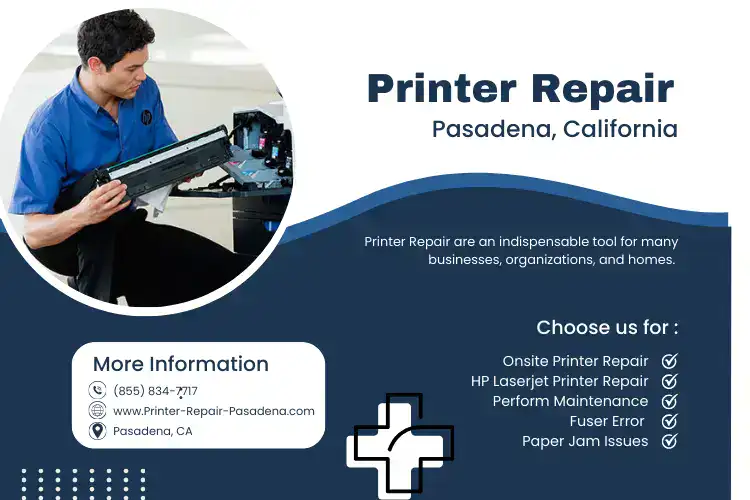Printer Repair - Everything You Need to Know
Printer Repair are an indispensable tool for many businesses, organizations, and homes. But when a printer malfunctions or breaks down, it can be difficult and expensive to repair them properly without the help of experts. In this article we’ll explain what you need to know about printer repair so that you can get your device up-and-running again quickly.
Understanding Common Printer Repair Issues
- Hardware Failure: Hardware failures are typically caused by aging parts within the internal components such as drums and fusers (which use heat to fuse toner onto paper). Additionally, dust accumulation on optical sensors which scan documents could also cause malfunctioning scanners.
- Software Incompatibility: Software incompatibilities occur when newly installed programs conflict with existing software on the computer. For example, if a new HP print driver is installed for one printer model but it conflicts with an older model’s drivers, this could cause both printers to malfunction.
How To Diagnose Printer Problems
When diagnosing print-related issues, there are four main steps which should be taken in order to ensure that the problem isn’t due to hardware or software incompatibility:
- Review Error Messages & Logs:
Carefully review any error messages and log files displayed by your device for clues about what might be causing errors.
- Check Connections:
Make sure all cables between the system unit and other components (such as hard drives or monitor) are securely connected.
- Test System Components Individually:
Power off each component individually while monitoring any changes in performance on your printer before restarting them again and retesting their functionality.)
- Check For Software Updates:
Make sure the drivers and software installed on your computer are up to date to avoid any software incompatibilities.
When Is It Time to Look into Professional Printer Repair?
If you try all of the above steps but still experience problems with your printer, it may be time to seek professional help. There are many companies that offer repair services for printers, as well as parts which can be used in order to fix them yourself if desired. Additionally, a number of online resources also provide detailed instructions about how best to tackle certain types of problem.
What Should I Do Before Contacting A Technician?
Prior to contacting a technician, there are few things users should do first in order make repairs easier:
- Document The Issue & Troubleshooting Steps Taken:
Documentation is an important step when troubleshooting issues so that technicians can more easily diagnose problems based on what has already been done (and not have repetition work). Be sure take notes on error messages, hardware/software versions, and the steps taken to attempt a repair. - Back Up Data:
Data loss is always an issue when it comes to repairing hardware devices so make sure all-important files are safely backed up on external storage devices or cloud-based systems. - Double Check Warranty Status & Coverage.
If you’re still within warranty period, check with your device manufacturer regarding coverage with regards to parts/labor if any repairs are needed as this may help keep costs down in the long run.
Hiring A Professional Printer Repair Technician
Once you have checked for software updates, tested system components individually (and documented these tests), you can begin researching professional technicians who can provide assistance in getting your printer back up and running again. Make sure that they have experience handling services related to your model of printer – there’s no point hiring someone who specializes primarily in laser printer. Additionally, be sure contact several different service providers so that rates can be compared before making a decision about which one to use. Contact Printer Repair Pasadena to schedule a onsite printer repair (855) 834-7717
Conclusion
Printers can be a useful tool for many businesses and individuals, but when one of these devices breaks down it can be difficult to repair without the help of experts. We hope that this article has provided some guidance in understanding common printer problems and how they may best be repaired. By following simple troubleshooting steps like checking connections, testing system components individually (and documenting results), as well downloading updated software/ drivers users should have an easier time getting their printers back up-and-running again quickly!
FAQ's - Frequently Asked Question - Printer Repair
A: Light prints can result from a low toner cartridge, a dirty scanner, or a worn transfer roller. Start by replacing the toner cartridge. If the issue persists, call for professional service to identify the faulty part1
Blurry prints may be due to issues with the toner cartridge or the fuser assembly. Check your paper and settings first. If that doesn’t solve it, have a technician inspect and replace the necessary components1.
Toner spills require special handling. Avoid using a standard vacuum or compressed air. Call a professional service to clean up large toner spills safely1.
Worn rollers or a worn fuser assembly can cause wrinkled pages. Damp paper can also contribute. A technician should replace worn parts to resolve this issue1



